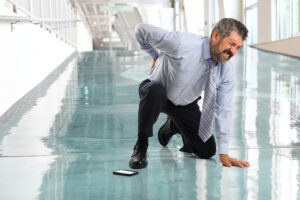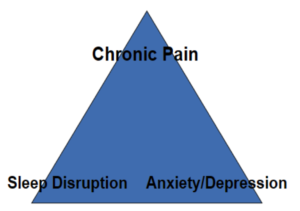At Barton Chiropractic Clinic we like to take the time during the holidays to recommend some gift ideas that are friendly for your back, neck, and spine — these are problem areas for a lot of people, our diverse patient base included.
Help Friends and Family Roll their Way into Wellness
Read on for one gift idea that you can get for family and friends that won’t kill your bank account and will at the same time relieve back pain: The Foam Roller!
Depending on which foam roller you decide to go with (there are several models), a decent one can help relieve chronic back conditions. Think of a properly-used foam roller as an at home deep tissue massage therapy session. Whoever you decide to give this excellent gift to can relieve damaged and achy muscles. Foam rollers are also excellent companions to injury rehabilitation. It’s also a great complement to a yoga practice.
Foam rollers can also help reduce shin splint pain and help increase oxygenated blood flow to the muscles, which will help with back pain and increase performance and energy.
We would say that foam rollers would make a great stocking stuffer, but we doubt many of the models offered would fit.
Contact Barton Chiropractic Clinic for More Information Regarding Chiropractic Care in Homewood, IL
If you’d like any more chiropractic care advice, contact Barton Chiropractic Clinic to schedule your consultation. We combine innovative chiropractic care approaches with good old-fashioned comprehensive care.
Read MoreFibromyalgia happens to be one of the most common chronic pain conditions in the United States. The American College of Rheumatology asserts that about 1 out of 50 Americans live with fibromyalgia on a daily basis. Fibromyalgia is characterized by pain felt in the body (throughout the body) that ends up creating areas that are incredibly tender — even to the slightest amount of pressure.
Fibromyalgia is difficult to diagnose. Pains can last for weeks, months, years — Fibromyalgia is chronic in nature. Chiropractic Care is an alternative treatment that can help your fibromyalgia. Read on for a few ways we help our patients living with this chronic condition.
Chiropractic Care Helps with Pain Management
Those who live with fibromyalgia live with constant pain, and chiropractic care is one way to treat such pain. Chiropractic care can help with pain and also helps restore the body to better overall health. The body self-heals as a result.
Particularly, improving alignment and doing some soft tissue work, chiropractors help treat fibromyalgia patients in lowering the pain levels of their pressure points, creating a decrease in tenderness.
Chiropractic Care Boosts Range of Motion
By loosening the body’s joints, chiropractors can make adjustments and leave the body more flexible in the process.
Chiropractic Care is Good for Your Quality of Sleep
Patients find that one of the many byproducts of chiropractic care can help you enjoy a more fulfilling, deeper sleep. You’ll also stay asleep longer, experiencing less pain.
Contact Barton Chiropractic Clinic for more information if you’re living with fibromyalgia. We’ll schedule your initial consultation and give you the comprehensive care you need.
Read MoreAs millions of people head out in droves today to get some serious savings in, shrewd shoppers everywhere should take some time to take care of their bodies. A good way to perform a little bit of maintenance and remedy the everyday wear and tear we put on ourselves through work, activities, and even strenuous holiday weekends is to stretch it out. Here are 5 stretches that will serve you well before and after a heavy day of shopping.
1.) Cat-Camel Back Stretch
This is a popular yoga move that is well worth a mention. As far as technique goes, get down on your hands and your knees, then slowly alternate between arching and rounding your back, basically making a “C” with your spine, like a scared cat, then try to make a reverse “C” by bringing your neck up and arching your back. : This will stretch all 3 sections of your spine (the lower lumbar, the middle thoracic, and the upper cervical area). Do this stretch gently. Don’t force it.
2.) Supine Cross-Legged Twist
Lie flat on your back with your arms outstretched, then cross one knee over the other (kind of like you’re crossing your legs and sitting in a chair). The next step is to shift your hips to the side (left side if you crossed your right leg, right side if you crossed your left leg), and softly allow your knees to drop. Breathe in deeply. Switch sides and enjoy!
3.) Standing Forward Bend
Save this for last. This stretch works best right after you do a downward dog yoga stretch. Stand straight, bring your feet together, then bend down while slightly bending the knees. Let your hands touch the ground. For extra leverage, you can cradle your elbows.
Make sure to breathe deeply in and out for each stretch. Conscious breathing will give you the added bonus of mental clarity and peace of mind, which seems to come in such small doses on Black Friday. Take care of yourself, and take care of others while you’re out there. And contact Barton Chiropractic Clinic today if you’re experiencing any lingering back pain that is resistant to stretching.
Read MoreChronic pain can cause a person to suffer from multiple problems that exist beyond the actual pain aspect. Chronic pain can cause anxiety and make a person feel like they’re losing control of their body — which is the ultimate humbling experience.
Living with chronic pain is no easy task, but learning a few coping methods can help patients navigate their lives with less anxiety and more acceptance.
Though we treat patients who suffer from neck, back, and leg pain, we also deal with patients who suffer from chronic pain, and a large part of what we do is educate our patients and readership about ways they can live their best lives, which includes natural, at-home pain management techniques. Read on for 3 ways to cope with chronic pain at home, without resorting to prescription medication.
1.) Practice Meditation and Deep Breathing
There’s a reason why monks are able to sit in extreme temperatures and never break their meditation. It’s because the mind is a powerful tool. Meditation can help reduce anxiety, and deep breathing techniques have been shown to bring calmness to the mind and the body. A balance of meditation, deep breathing, and yoga (if you’re physician permits) can all work as a wellness trifecta, helping reduce pain and mental clutter.
2.) Get with a Support Group
If you suffer from chronic pain, there are support groups who meet regularly as a way to communicate and spread information. These people will understand what you go through on a daily basis and may even have answers to some of your problems and questions.
3.) Chart Progress and Acknowledge Success of All Sizes
Keep track of the healthy things you’re doing with your mind and your body. Invest in a dry erase board and log how many times you meditate, eat healthily, and do yoga. Set positive yet realistic goals and reward yourself when you achieve them. Having a positive frame of mind is key to successful pain management.
If you suffer from back, leg, or neck pain, schedule a consultation with Barton Chiropractic Clinic today. We have a long demonstrated history of treating many different types of pain the natural, holistic way.
Read MoreThe back can become injured in a variety of ways and it can happen even when we’re doing the most innocuous activities.
However, there are certain types of back injuries that we see a lot of at Barton Chiropractic Clinic. We specialize in drug-free treatments which help our patients recover from injury and enjoy a better quality of life. A large part of what we do as chiropractic care specialists is provide education and information to our patients and readership that can help them avoid back pain and avoid sustaining injury.
Read on for a few of the more common ways that people injure their backs.
Back Strain (and Sprain)
It’s a sad fact of reality that our lower backs end up taking the lion’s share of the pressure, the largest amount of stress — not to mention wear and tear. When we lift heavy, cumbersome objects and twist our backs, this can often result in injury or strain. Lumbar Strain is one possibility (occurring in the muscle fibers — which become torn in the process), same with Lumbar Sprain (this happens when your bone-holding ligaments are torn). The lumbar spine is the most common area of injury when it comes to the back.
Herniated Disc
You’ve likely heard of this condition, but we’ll elaborate on it anyway. Herniated discs occur during disc tear, which ends up spilling out, putting undue pressure on your surrounding nerves. This can result in sharp, shooting pains. This pain might radiate outward from the buttocks, reaching the backs of the legs (this is also referred to as sciatica), which will often be a sign of herniated disc.
Pinched Nerve
Nerve functionality can be damaged or compromised when nerve roots start to compress around your cervical vertebrae. This will, again, result in radiating pain, this time coming from your neck and shoulder region. Those who experience a pinched nerve might experience muscle weakness, tingling sensation, or a feeling of numbness in the extremities.
If you’re experiencing any of the symptoms mentioned above, it’s a good time to call your local Chiropractor. Barton Chiropractic Clinic serves the Homewood, IL area and its surrounding communities. Call today to schedule your consultation.
Read MoreWe all know that school is in. As we move from Fall to Winter, and as we head into Spring and roll into Summer, it’s important to keep your child’s wellbeing in mind at all times, no matter the season.
Setting your child up for success in the classroom involves studying, proper nutrition, implementing a healthy structure, but it also includes making sure that your child’s health and wellness is up to par. It just so happens that spine, back, and neck problems can affect adults and children’s alike. Backpacks play a big role in causing back trouble in children. Read on for a few things to keep in mind when it comes to backpacks.
Avoid Heavy Weight
Make sure that your child avoids carrying anything more than 10% of their body weight. Make sure that the distribution of books is satisfactory — try to put the heaviest books and objects at the back of the back. Opt for paperbacks over hardcover books, when applicable. Encourage your child to carry only that which is essential — leave the toys at home!
Keep it Cozy
You want to ensure that your child’s book bag isn’t loose and that the contents aren’t bouncing around, because this can put undue stress on your child’s spine, not to mention their discs. Minimizing bounce and shift will help your child avoid back problems. One measure you should always take is adjusting shoulder straps so that your child’s bag is snug and that it isn’t pulling them backward.
Stop One-Strapping It
It used to be the cool thing to do, but slinging a backpack over one shoulder is awful for your back and could cause pressure, pain, and discomfort down the road.
A few pro tips:
If your child’s school permits, use roller packs, which will glide across the floor with ease. You can also keep a look out for packs with nifty features, like padded shoulder straps, special compartments, not to mention a belt that can fasten around the waist.
If you have any additional questions about backpacks or if your child is experiencing back or neck pain of any sort, contact Barton Chiropractic Clinic Inc.
Read MoreHistory: Pain is not new, but the term fibromyalgia is. In 1975, Canadian Rheumatologists Moldofsky & Smythe discovered that sleep deprivation in healthy subjects produced fibromyalgia-like symptoms.
Sleep deficiencies resulted in:
- Oxygen deficit
- Growth hormone changes
- Deconditioning
Many people are misdiagnosed with fibromyalgia. In order to have Fibromyalgia you must exhibit: Widespread pain in 11 out of 18 specific points on the body. You must also have joint stiffness and insomnia, widespread muscle main, weakness, overwhelming fatigue, insomnia, short-term memory loss/confusion.
If You Have Three or More Of These Symptoms…You May Have Fibromyalgia
Do not be afraid of fibromyalgia. At first the severity of pain is very scary and frustrating. However, it is very important that calmness prevails because anxiety will only make the pain and your sleep patterns worse.
The triangle is – severe pain which causes sleep problems – which causes anxiety – which causes more muscle pain – which causes more sleep problems – which causes more anxiety and around and around it goes. Anything that aggravates your sleep will also make the muscle shortening worse.
Deep “REM” sleep vs. light sleep = healing, correction, growth
There are many names for this condition given all around the world. There is a tremendous controversy over its existence, and even more over it’s criteria for diagnosis. It can affect any person on the planet and is associated with many “Injury Factors.” The complete condition is more common in women, but it is also common in men, and even in children and young people.
- Increased Age
- Repetitive Work
- Types and Severity of Accidents
- Joint deformity
- Hormonal Effects (Growth Hormone, rapid cycling of periods, low estrogens and progestins, low testosterone)
- The Presence of Stress or Worry
- Inherent Anxiety Level
- Types of Work and Workload
- The Absence of Stretching
- Muscle Bulk and Strength
- Muscle Length
- Nerve Function
- Inherent Flexibility of Muscle
- Types of Hobbies and Past-times
- Drug Effects upon Muscles
- Types of Work and Workload
- The Absence of Stretching
- Muscle Bulk and Strength
- Muscle Length
- Nerve Function
- Inherent Flexibility of Muscle
- Types of Hobbies and Past-times
- Drug Effects upon Muscles
People with fibromyalgia are suffering from muscle and tendon shortening, caused in part by multiple nerve compressions throughout the spine and limbs. Pain can be directly from the muscles crushing a joint, or from pain referring into the joint from the spine. Typically both exist at the same time.
Headaches can exist from referred pain from the neck but also from local muscle problems around the head. The spine in the neck, mid-back and low back figure prominently in the source of pain.Deep spinal muscles cause deep nerve compressions and traction that cause further muscle problems in the spine, limbs and head.
Pain is nature’s (your body’s) way of saying: “There is something wrong here that I can not fix by myself!”
The cause of most, if not all, fibromyalgia pain is a combination of nerve and muscle dysfunction.
The deep spinal muscles cause minor or even major nerve entrapment syndromes. Those nerve injuries will cause pain that refers into our limbs, head and body. One of the most important principles that must be understood is that, once adulthood is reached, adult skeletal muscles shorten with exercise, injury or any movement of the muscle. This is probably related, in part, to a decrease in growth hormone levels as we move into adulthood.
It appears that growth hormone has an affect upon the degree in which muscles sustain exercise and injury. Another important principle is that muscles that are injured during work shorten from those injuries during rest, such as during sleep, sitting or standing. This will cause joint compression of the spine and limbs and causes joint stiffness, joint pain and eventually osteoarthritis of the joint.
Much of this shortening is gradual, over months or years, but it does happen.
The more your spine is like a child’s, the better. This is why a child can run all day and not tire out or ache and then wake the next day and run all day yet again. This is also why most adults over thirty have difficulty running a block or two without hobbling to their car.
Muscles that remain persistently spastic or short will eventually scar into a tight spastic position causing abnormal joint movement and compression. This will lead to disc compression and herniation, arthritis and misalignments of the spine. It will also cause joint compression in the limbs and abnormal tracking, which will cause abnormal wear points and osteoarthritis. The spine is lined with five layers of muscles. The three top layers are designed to be the heavy work muscles for the spine and the two deepest layers are designed to be the structural integrity for the spine. These deep muscles, primarily the multifidus and the rotator brevis and longus muscles are probably the most important muscles of the body. These muscles allow our spines to move without falling apart. They are very strong, but also very small. They are not designed for heavy work but unfortunately will be exposed to work and injury over time. These muscles become very tight and scarred and can literally crush segments of your spine.
Neuropathy is a term to describe nerve disease or injury. This includes diseases such as multiple sclerosis, but also includes myofascial compression/traction neuropathy, or “pinched nerves.” The most common neuropathy, or nerve “disease” is a pinched nerve. The deep spinal muscles cause directly, or indirectly, most of the pinched nerves we experience in our lives.
From a biophysical point of view, the base of the neck and low back are the weak links of the spine. The base of the neck and low back are most susceptible to muscle injury and scarring. The areas of note are between the fifth cervical, or neck vertebrae and the seventh cervical vertebrae. In the low back, the weak areas are between the fourth lumbar vertebrae and the first sacral vertebrae.
Pain could be considered a very important adaptation. Many people would probably argue this point, but, nevertheless, pain can save your life, and in a world of natural selection, this is good. Learning to live with it is not a good answer! Covering it up with painkillers is not a good answer. Ignoring it until it gets worse is not a good answer.
There is no one definite solution for fibromyalgia for all people. Most people with fibromyalgia respond gradually to a combination of chiropractic, physiotherapy, exercise and nutritional supplementation. Some people can not be totally cured, but may be helped by a combination of therapy and analgesics.
Remember that physicians and therapists are not Gods but are simply people trying to make a difference in a person’s life that is truly suffering.
Learn as much as you can about stretching, physiotherapy and chiropractic. Doctors of chiropractic use a procedure called an adjustment. Chiropractic adjustments remove the interference from compressed nerves so that the muscles controlled by those nerves can relax and lengthen. Physiotherapy can also be a helpful way to combat fibromyalgia, especially when combined with chiropractic adjustments and exercise. Within the area of physiotherapy there are numerous tools such as ultrasound that can reduce muscle scarring. Manipulation, stretching and traction can be helpful but are often a little too painful in the early stages of therapy.
Moist and dry heat can both be very helpful. A comprehensive stretching program will prove to be the single determining factor for prevention. Career, lifestyle, depression and age are also important. Exercise Increases Muscle Mass, Mobility, Circulation, and “Good” Hormones. Water requirement: 6-8 glasses/day, Natural Sleep Aids like Valerian Root and Melatonin
Proper eating is NOT enough: today’s Sulfate, Chondroitin, and Cat’s Claw and Sharks Cartilage are aimed at cartilage supplementation and food contains 70-80 percent less nutrition than it did 30 years ago. You need supplementation! All Natural High Potency Vitamin & Mineral supplement: Antioxidant Vitamins A,C, D,E, & K, Pycnoginols, Pine bark, Grape seed extracts, Co-Q10, Glucosamine reducing inflammation. Other supplements include Melatonin, a central brain hormone that can dramatically help sleep and pain in some. It also stimulates growth hormone secretion but is not completely proven to be safe. L-Arginine is one of many amino acids that stimulates growth hormone naturally and may become a major player for pain and rehabilitation.
Avoid prolonged postures at work and home. Manage stress through meditation and, if needed, counseling. Massage Therapy can be very effective as an adjunct to fibromyalgia treatment. Patients who suffer mild symptoms may benefit even more from massage therapy. Timing: The longer the problem has existed, the more difficult it is to correct. Learn more about the condition. Seek support groups. Find knowledgeable doctors and therapists willing to use a team approach. Learn to manage stress. Develop a positive attitude. Develop a wellness lifestyle
“Maybe it will go away!” We know that does not happen!
Don’t wait for your pain to go away on its own, because chances are it won’t!
Read MoreWe all know it’s that time of year again when all of the hawks go looking for the best deals in town for Black Friday. While everyone may be looking to save big, we’d wager nobody intends to get injured in the process, but collateral damage tends to happen when big clusters of people get together vying after the same items.
Read on for some Black Friday shopping tips that will help you avoid injury.
1.) Shop From Home!
In this day and age, it’s easier than ever to get all your shopping done from home. As long as you know the sizes when it comes to clothes and shoes, you should be good to go. Just about every retailer has an online presence and will let you buy product from their website. That way you can stay away from the crowds and avoid the traffic and the bruising.
2.) Bring a Friend
It’s a bad idea to lift heavy objects on your own. Retail items aren’t always the easiest to haul out of the store, either. Bringing a friend will help you avoid getting a back or neck injury from lifting bulky objects alone.
3.) Schedule an Appointment with Your Chiropractor
Many folks think that seeing a chiropractor is the measure only after experiencing an injury, but chiropractic care can actually help you avoid injury. With a chiropractic adjustment, your body will be more pliable, more limber, more relaxed, and functioning at an optimum capacity. You’ll be ready to hit the pavement and you’ll be less likely to get a tweak in your neck or back.
If you experience back pain that persists, contact Barton Chiropractic Clinic today. We have a long track record of getting our patients back to active. Happy holidays from ours to yours!
Read MoreBarton Chiropractic Clinic specializes in chiropractic care services in Homewood, IL. A large part of what we do is provide preventive medicine in the form of education and health tips that will help you avoid costly health hardships down the road. A part of staying healthy is staying hydrated. So many of our patients aren’t getting the requisite amount of water — about 75% of the population, actually.
Read on for a few reasons to stay on top of your hydration.
1.) Dehydration Leads to Joint Pain
Drinking the correct amount of water each day — which is about 1/2 your body weight in ounces — will help your joints stay hydrated and pliable. Around 80% of the body’s cartilage composition is made of water, so your joints can become compromised by a lack of water.
2.) Not Getting Enough H2O is Bad for Your Back
Did you know that dehydration actually has a negative effect on the discs of the spinal column? Herniated discs can come as a result, which nobody wants to have to deal with.
3.) Dehydration = Low Energy
Dehydration happens to disrupt your heart’s ability to properly pump blood (which spreads oxygen to your body’s cells). A lack of hydration makes it hard on your body to maintain peak wellness.
Remember next time you’re thirsty to make it a water. If you still experience back or joint pain even in the face of getting the requisite amount of water each day, contact Barton Chiropractic Clinic today to schedule your appointment. We have a long, successful track record of happy patients — we keep you in the game.
Read MoreYou’ve likely heard of a friend or family undergoing chiropractic care — but maybe you’ve been reluctant to try it out. Maybe you haven’t experienced any sort of discomfort or injury — which, consider yourself lucky if this is true for you. But, just the same, it’s important not to press your luck, which brings Barton Chiropractic Clinic into compelling reason number one (which might be the most compelling reason for many)
1.) To Avoid Future Injury
Chiropractic care is an option for those who experience injury, sure, but it’s also a viable drug-free option for routine maintenance that will help patients avoid future injury. Chiropractic adjustments can help realign your spine, which will give you added health benefits and help you get more in-touch with your body. Chiropractic care specialists will also give you tips and advice, give you information on things like how to lift properly, for instance. Chiropractic care truly is the gift that will keep on giving!
2.) Because Daily Routines Break Down the Body
It doesn’t matter what you do, whether you stand or sit at work, day by day, you’re putting your body through a significant amount of wear and tear. Just like you take your vehicle in for a tune-up every several thousand miles, you should give your body a tune up — once a quarter is a good place to start. Chiropractic treatments are a great way to check in with your body and recalibrate your spine. It’ll help you optimize your daily routine, as a matter of fact.
3. ) You Many of Us Aren’t Performing at Our Full Potential
Is that you feeling like you’re not firing on all cylinders, so to speak? Misalignments of the spine (also called subluxations) can and will disrupt your vital brain communication, affecting the way it sends messages to the rest of the body. Just one simple spine adjustment will help clear situations like these up immediately.
Don’t wait to explore the benefits of chiropractic care. Treat yourself to the Barton Chiropractic Clinic experience today.
Read More









